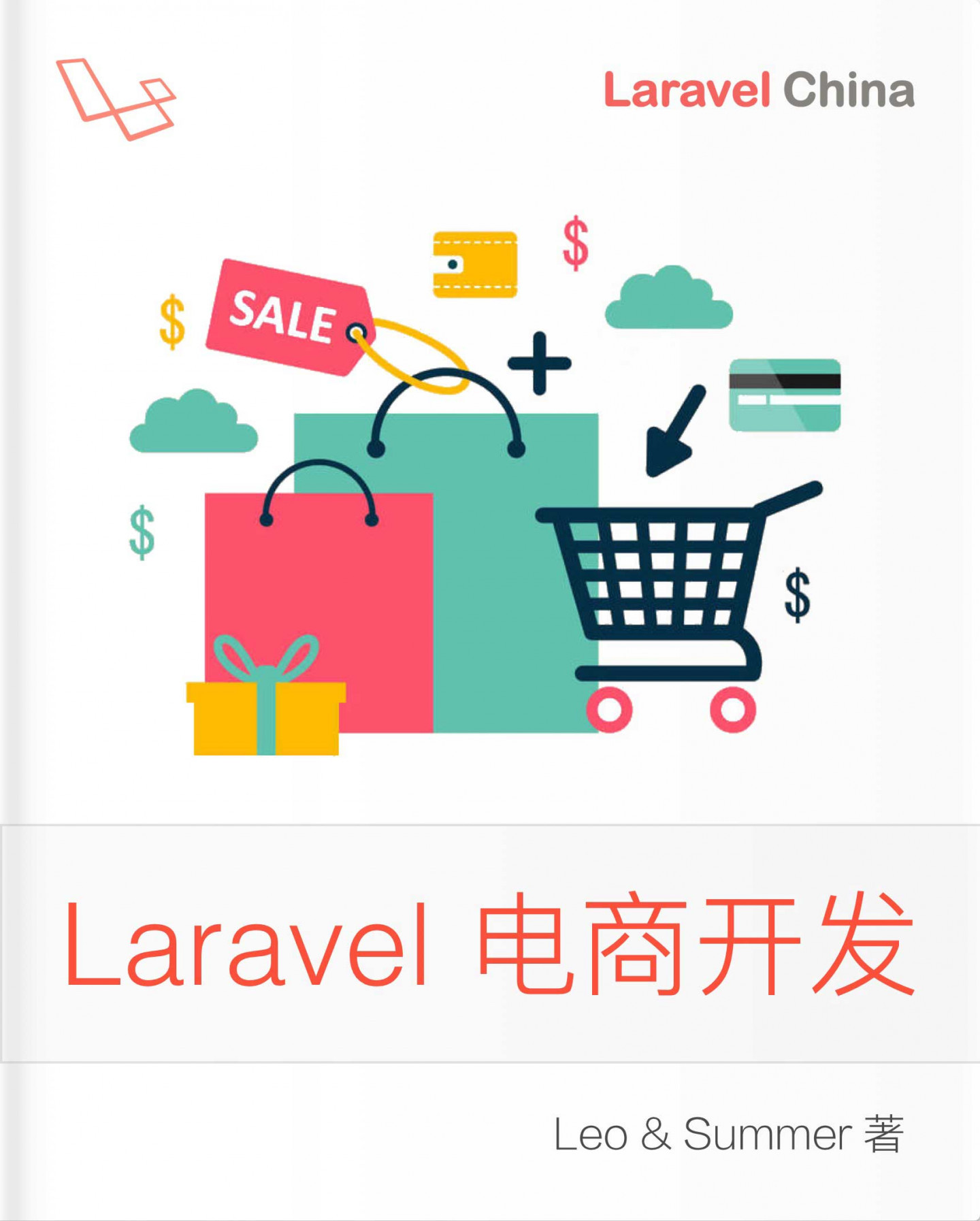查询构造器
数据库:查询构造器
简介
数据库查询构造器提供了方便、流畅的接口,以用来创建及运行数据库查找。可用来执行应用程序中的大部分数据库操作,且能在所有被支持的数据库系统中使用。
注意:Laravel 的查询构造器使用 PDO 参数绑定,以保护你的应用程序不受数据库注入攻击。在传入字符串作为绑定前不需要先清理它们。
获取结果
从数据表中获取所有的数据列
若要开始进行查找,可在 DB facade 上使用 table 方法。table 方法会针对指定的数据表返回一个查询构造器实例,允许你在查询时链式调用更多约束,并得到最终结果。在这个例子中,我们将会从一个数据表中来获取所有的记录:
<?php namespace App\Http\Controllers; use DB; use App\Http\Controllers\Controller; class UserController extends Controller { /** * 显示应用程序的所有用户列表。 * * @return Response */ public function index() { $users = DB::table('users')->get(); return view('user.index', ['users' => $users]); } }就像 原始查找 一样,get 方法会返回一个数组结果,其中每一个结果都是 PHP StdClass 对象的实例。你可以将列作为对象的属性来访问每个列的值:
foreach ($users as $user) { echo $user->name; }从数据表中获取单个列或行
若你只需从数据表中取出单行数据,则可以使用 first 方法。这个方法会返回单个 StdClass 对象:
$user = DB::table('users')->where('name', 'John')->first(); echo $user->name;若你不想取出完整的一行,则可以使用 value 方法来从单条记录中取出单个值。这个方法会直接返回字段的值:
$email = DB::table('users')->where('name', 'John')->value('email');从数据表中将结果切块
若你需要操作数千条数据库记录,则可考虑使用 chunk 方法。这个方法一次只取出一小「块」结果,并会将每个区块传给一个闭包进行处理。这个方法对于要编写处理数千条记录的 Artisan 命令 非常有用。例如,让我们将整个 user 数据表进行切块,每次处理 100 条记录:
DB::table('users')->chunk(100, function($users) { foreach ($users as $user) { // } });你可以从闭包中返回 false,以停止对后续切块的处理:
DB::table('users')->chunk(100, function($users) { // 处理记录… return false; });获取字段值列表
若你想要获取一个包含单个字段值的数组,你可以使用 lists 方法。在这个例子中,我们将取出 role 数据表 title 字段的数组:
$titles = DB::table('roles')->lists('title'); foreach ($titles as $title) { echo $title; }你也可以在返回的数组中指定自定义的键值字段:
$roles = DB::table('roles')->lists('title', 'name'); foreach ($roles as $name => $title) { echo $title; }聚合
查询构造器也提供了各种聚合方法,例如 count、max、min、avg、以及 sum。你可以在创建查找后调用其中的任意一个方法:
$users = DB::table('users')->count(); $price = DB::table('orders')->max('price');当然,你也可以将这些方法合并到其它的子句上来构建查找:
$price = DB::table('orders') ->where('finalized', 1) ->avg('price');Selects
指定一个 Select 子句
当然,你并不会总是想从数据表中选出所有的字段。这时可以使用 select 方法为查找指定一个自定义的 select 子句:
$users = DB::table('users')->select('name', 'email as user_email')->get();distinct 方法允许你强制让查找返回不重复的结果:
$users = DB::table('users')->distinct()->get();若你已有一个查询构造器实例,且希望在其现存的 select 子句中加入一个字段,则可以使用 addSelect 方法:
$query = DB::table('users')->select('name'); $users = $query->addSelect('age')->get();原始表达式
有时你可能需要在查找中使用原始表达式。这些表达式会被当作字符串注入到查找中,因此要小心避免造成数据库注入攻击!要创建一个原始表达式,可以使用 DB::raw 方法:
$users = DB::table('users') ->select(DB::raw('count(*) as user_count, status')) ->where('status', '<>', 1) ->groupBy('status') ->get();Joins
Inner Join 语法
查询构造器也可用来编写 join 语法。要操作基本的 SQL「inner join」,则可以在查询构造器实例上使用 join 方法。传入 join 方法的第一个参数是你所需要连接的数据表名称,其它参数则指定用来连接的字段约束。如你所见,你可在单个查找中连接多个数据表:
$users = DB::table('users') ->join('contacts', 'users.id', '=', 'contacts.user_id') ->join('orders', 'users.id', '=', 'orders.user_id') ->select('users.*', 'contacts.phone', 'orders.price') ->get();Left Join 语法
如果你想以操作「left join」来代替「inner join」,请使用 leftJoin 方法。leftJoin 方法和 join 方法有着相同的签名:
$users = DB::table('users') ->leftJoin('posts', 'users.id', '=', 'posts.user_id') ->get();高级的 Join 语法
你也可以指定更高级的 join 子句。让我们以传入一个闭包当作 join 方法的第二参数来作为开始。此闭包会接收 JoinClause 对象,让你可以在 join 子句上指定约束:
DB::table('users') ->join('contacts', function ($join) { $join->on('users.id', '=', 'contacts.user_id')->orOn(...); }) ->get();若你想要在连接中使用「where」风格的子句,则可以在连接中使用 where 和 orWhere 方法。这些方法会比较字段和一个值,来代替两个字段的比较:
DB::table('users') ->join('contacts', function ($join) { $join->on('users.id', '=', 'contacts.user_id') ->where('contacts.user_id', '>', 5); }) ->get();Unions
查询语句构造器也提供了一个快捷的方法来「合并」两个查找。例如,你可以先创建一个初始查找,然后使用 union 方法将它与第二个查找进行合并:
$first = DB::table('users') ->whereNull('first_name'); $users = DB::table('users') ->whereNull('last_name') ->union($first) ->get();也可使用 unionAll 方法,它和 union 有着相同的方法签名。
Where 子句
简单的 Where 子句
要在查找中加入 where 子句,可在查询语句构造器实例中使用 where 方法。基本的 where 方法调用需要三个参数。第一个参数是字段的名称;第二个参数是一个运算符,它可以是数据库所支持的任何运算符;第三个参数是要对字段进行评估的值。
例如,这是一个要验证「votes」字段的值等于 100 的查找:
$users = DB::table('users')->where('votes', '=', 100)->get();为了方便起见,若你只想简单地验证某个字段等于一个指定的值,则可以直接将这个值作为第二个参数传入 where 方法:
$users = DB::table('users')->where('votes', 100)->get();当然,在编写 where 子句时,你也可以使用各种其它的运算符:
$users = DB::table('users') ->where('votes', '>=', 100) ->get(); $users = DB::table('users') ->where('votes', '<>', 100) ->get(); $users = DB::table('users') ->where('name', 'like', 'T%') ->get();Or 语法
你也可以在查找中加入 or 子句来跟 where 约束链式调用在一起。orWhere 方法和 where 方法接受相同的参数:
$users = DB::table('users') ->where('votes', '>', 100) ->orWhere('name', 'John') ->get();其它的 Where 子句
whereBetween
whereBetween 方法验证一个字段的值介于两个值之间:
$users = DB::table('users') ->whereBetween('votes', [1, 100])->get();whereNotBetween
whereNotBetween 方法验证一个字段的值落在两个值之外:
$users = DB::table('users') ->whereNotBetween('votes', [1, 100]) ->get();whereIn 与 whereNotIn
whereIn 方法验证指定字段的值包含在指定的数组之内:
$users = DB::table('users') ->whereIn('id', [1, 2, 3]) ->get();whereNotIn 方法验证指定字段的值不包含在指定的数组之内:
$users = DB::table('users') ->whereNotIn('id', [1, 2, 3]) ->get();whereNull 与 whereNotNull
whereNull 方法验证指定列的值为 NULL:
$users = DB::table('users') ->whereNull('updated_at') ->get();whereNotNull 方法验证一个列的值不为 NULL:
$users = DB::table('users') ->whereNotNull('updated_at') ->get();高级的 Where 子句
参数分组
有时你可能会需要创建更高级的 where 子句,例如「where exists」或者嵌套的参数分组。Laravel 的查询语句构造器也能处理这些。让我们先来看下一个在括号中将约束分组的例子:
DB::table('users') ->where('name', '=', 'John') ->orWhere(function ($query) { $query->where('votes', '>', 100) ->where('title', '<>', 'Admin'); }) ->get();如你所见,上面例子会将闭包传入 orWhere 方法,以告诉查询语句构造器开始一个约束分组。此闭包接收一个查询语句构造器的实例,你可用它来设置应包含在括号分组内的约束。上面的例子会生成以下 SQL:
select * from users where name = 'John' or (votes > 100 and title <> 'Admin')Exists 语法
whereExists 方法允许你编写 where exists SQL 子句。此方法会接受一个闭包参数,此闭包接收一个查询语句构造器实例,让你可以定义应放在「exists」SQL 子句中的查找:
DB::table('users') ->whereExists(function ($query) { $query->select(DB::raw(1)) ->from('orders') ->whereRaw('orders.user_id = users.id'); }) ->get();上述的查找会生成以下的 SQL:
select * from users where exists ( select 1 from orders where orders.user_id = users.id )Ordering、Grouping、Limit 及 Offset
orderBy
orderBy 方法允许你针对指定字段将查找结果进行排序。orderBy 的第一个参数为你要用来排序的字段,第二个参数则控制排序的顺序,可以是 asc 或 desc:
$users = DB::table('users') ->orderBy('name', 'desc') ->get();groupBy、having 与 havingRaw
groupBy 和 having 方法可用来将查找结果进行分组。having 方法的签名和 where 方法的类似:
$users = DB::table('users') ->groupBy('account_id') ->having('account_id', '>', 100) ->get();havingRaw 方法可用来将原始字符串设置为 having 子句的值。例如,我们可以找出所有销售额大于 2,500 元的部门:
$users = DB::table('orders') ->select('department', DB::raw('SUM(price) as total_sales')) ->groupBy('department') ->havingRaw('SUM(price) > 2500') ->get();skip 与 take
要限制查找所返回的结果数量,或略过指定数量的查找结果(偏移),则可使用 skip 和 take 方法:
$users = DB::table('users')->skip(10)->take(5)->get();Inserts
查询语句构造器也提供了 insert 方法,用来将记录插入数据表。insert 方法接收一个数组,包含要插入的字段名称及值:
DB::table('users')->insert( ['email' => 'john@example.com', 'votes' => 0] );你甚至可以在 insert 调用中传入一个嵌套数组,来一次性插入多条记录到数据表中。每个数组代表要插入数据表中的一列记录:
DB::table('users')->insert([ ['email' => 'taylor@example.com', 'votes' => 0], ['email' => 'dayle@example.com', 'votes' => 0] ]);自动递增 ID
若数据表有自动递增的 id,则可使用 insertGetId 方法来插入记录并获取其 ID:
$id = DB::table('users')->insertGetId( ['email' => 'john@example.com', 'votes' => 0] );注意:当使用 PostgreSQL 时,insertGetId 方法将预测自动递增字段的名称为
id。若你要从不同「顺序」来获取 ID,则可以将顺序名称作为第二个参数传给insertGetId方法。
Updates
当然,除了可在数据库中插入记录之外,也可使用 update 方法来让查询语句构造器更新已存在的记录。update 方法和 insert 方法一样,接收含有一对字段及值的数组,其中包含了要被更新的字段。可使用 where 子句来约束 update 查找:
DB::table('users') ->where('id', 1) ->update(['votes' => 1]);递增或递减
查询语句构造器也提供了便利的方法来递增或递减指定字段的值。此方法提供了一个比手动编写 update 语法更具表达力且更精练的接口。
这两个方法都必须接收至少一个参数(要修改的字段)。也可选择性地传入第二个参数,用来控制字段应递增/递减的量。
DB::table('users')->increment('votes'); DB::table('users')->increment('votes', 5); DB::table('users')->decrement('votes'); DB::table('users')->decrement('votes', 5);你也可以指定要在操作中更新其它字段:
DB::table('users')->increment('votes', 1, ['name' => 'John']);Deletes
查询语句构造器也可通过 delete 方法来将记录从数据表中删除:
DB::table('users')->delete();在调用 delete 方法之前,也可加上 where 子句来约束 delete 语法:
DB::table('users')->where('votes', '<', 100)->delete();若你希望截去整个数据表的所有数据列,并将自动递增 ID 重设为零,则可以使用 truncate 方法:
DB::table('users')->truncate();悲观锁定
查询语句构造器也包含一些可用以协助你在 select 语法上作「悲观锁定」的函数。若要以「共享锁」来运行语句,则可在查找上使用 sharedLock 方法。共享锁可避免选择的数据列被更改,直到事务被提交为止:
DB::table('users')->where('votes', '>', 100)->sharedLock()->get();此外,你也可以使用 lockForUpdate 方法。「用以更新」锁可避免数据列被其它共享锁修改或选取:
DB::table('users')->where('votes', '>', 100)->lockForUpdate()->get();
 Laravel 5.1 中文文档
Laravel 5.1 中文文档



 关于 LearnKu
关于 LearnKu 



推荐文章: